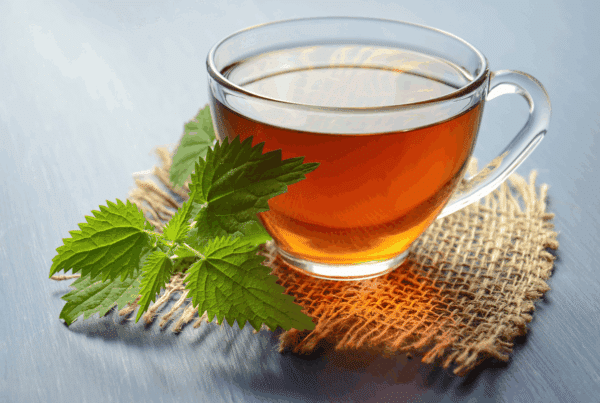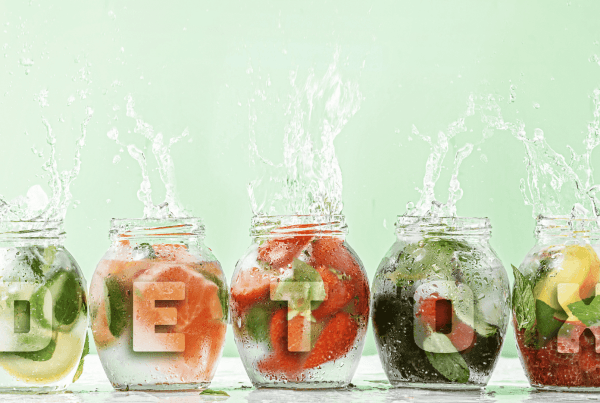What is insulin resistance?
Insulin resistance is a metabolic disorder that leads to reduced efficiency of cells in the muscles, liver and fat tissue to adequately respond to the hormone insulin. Insulin is key to regulating blood glucose levels, allowing cells to use glucose as an energy source. When cells do not respond properly to insulin, blood sugar levels remain high, and the pancreas compensates by producing more insulin, causing hyperinsulinemia. Ignoring this condition can lead to serious health problems such as type 2 diabetes, obesity and cardiovascular disease.
The main function of insulin is to maintain a normal level of glucose, ie. blood sugar. With this, insulin enables cells to use blood sugar for their energy needs. Insulin resistance is a condition in which the cells respond poorly or do not respond at all to insulin, and its level in the blood increases and eventually we get toxic levels of sugar in the blood, the so-called. high blood sugar.
What is great to know is that insulin resistance can be reversed and its progression to pre-diabetes or diabetes can be prevented. All this is possible thanks to proper nutrition and increased physical activity.
How is insulin resistance diagnosed?
There is no single test that can directly diagnose insulin resistance. Therefore, doctors use a combination of different methods and factors to identify insulin resistance.
- Family and personal history
Doctors first gather information about family and personal medical history. If someone in the family suffers from type 2 diabetes, hypertension or obesity, there is a greater risk of developing insulin resistance. - Physical examination of the patient
During the examination, the doctor pays attention to body weight, height, body mass index and waist circumference. Increased body weight, especially fat accumulated in the abdominal area may indicate an increased risk of insulin resistance. - Present signs and symptomsand
- Laboratory test results
Insulin resistance test
Insulin resistance is usually detected through laboratory blood tests that measure sugar levels. The two main tests for this purpose are the basic insulin resistance test and the OGTT test (glucose tolerance test). The OGTT test is one of the most reliable ways to assess how the body processes glucose.
Testing is done in the morning (ideally before 8 o'clock), and before that it is important that the person does not eat or drink for at least 8 hours. Also, intense physical activity should be avoided 24 hours before the test, as it may affect the results. The whole procedure takes between 2 and 3 hours.
First, a blood sample is taken on an empty stomach. Then, the patient drinks a glucose solution, and the doctor determines when the next samples will be taken. Normally, measurements are taken after 60 and 120 minutes. During the test, the patient must rest, without eating, drinking or smoking cigarettes. After the test is completed, the patient can continue with a regular meal.
Symptoms of insulin resistance
- Increased hunger and desire for unhealthy refined sugars, i.e. sweets (a little trick for this problem is generally to plan a snack well for the part of the day when there is a drop in energy, regardless of whether the reason is insulin or not - e.g. some citrus fruit, a handful of nuts or unsalted seeds, if we know that we will not have a specific meal for the next 2.3 hours, we can include some dairy product without excess sugar and fat, such as protein pudding)
- Excessive thirst
- Frequent urination
- Weight changes, difficulty losing weight
- Fat deposits
- Lack of energy, feeling tired especially after meals
- Irregular menstrual cycle
Insulin resistance can be manifested by various signs of the disease, such as increased blood pressure, increased levels of glucose, triglycerides, cholesterol, dark spots on the skin in the groin area, armpits, and the back of the neck.
In order to determine whether you really have insulin resistance, you should have certain tests done by your doctor. The patient's family and personal history, physical examination and laboratory analyzes are performed - glucose test, OGTT test (glucose tolerance), hemoglobin, lipid status.
The following values show prediabetes state:
A1C – from 5.7% to 6.4%
FPG – from 100 to 125 mg/dL
OGTT – from 140 to 199 mg/dL

How to influence the reduction of insulin resistance?
This is actually quite easy, and as we mentioned before, insulin resistance can be completely reversed with lifestyle changes.
- Eat whole, fresh foods, fruits, vegetables, legumes, gluten-free grains, nuts, seeds, and high-quality animal proteins
- Eliminate artificial sweeteners. Use moderate amounts of stevia and erythritol to sweeten drinks or foods. Today, sugars are added to salty products, tomato paste, cured meats, milk, almost everything...
- Eat foods rich in fiber, as they can be as effective as diabetes medications in lowering blood sugar without the side effects. Fiber slows the absorption of sugar into the intestinal bloodstream (nuts, seeds, fruits, vegetables, legumes)
- Affect the quality of your sleep, avoid meals three hours before bed and enjoy a warm bath before bed to relax your muscles. If you have problems with sleep, we recommend ASHWAGANDA. for calming the nerves and a better sleep in a completely natural way
- Physical activity may be the most powerful medicine for blood sugar regulation. If you have a problem with time, we recommend short high-intensity training sessions called HIIT
Insulin resistance is one of the main drivers of many chronic diseases today. However, this condition can be overcome very easily. The good thing is that with the appearance of insulin resistance, we get a warning that we should make some changes in our life in order to be healthier and have less stress.
Interesting tips and tricks for eating with insulin resistance
Inclusion of resistant starch in the diet
Here's a trick that will make you all very happy. With insulin resistance, you can also eat pasta, potatoes, cereals and other starchy foods.
The trick is to make resistant starch. Resistant starch partially behaves like insoluble fiber and therefore the spike in blood sugar and insulin would be lower. This not only helps control blood sugar, but also increases dietary fiber intake.
How is resistant starch made?
When we cook a starchy food, let it cool down. After that, put it in the fridge. Now we can eat that dish either chilled or reheated, with the fact that we should avoid reheating complex dishes that contain foods that are not recommended to be reheated.
Balancing meals
Start the meal with a salad or stew or vegetable soup, then eat protein from the prepared meal - meat, fish, eggs, legumes, and end the meal with starchy foods so that the sugars that are introduced do not immediately go into the blood. In this way, you will maintain the stability of sugar and insulin in the blood and you will be without fatigue and hunger pangs after eating.
Intelligent snack choices
Another interesting trick is related to one of the more famous salty snacks - popcorn. You can eat popcorn, but if you prepare it in coconut oil and with the addition of turmeric. Popcorn is a whole grain product that, in moderate quantities, can be part of a healthy diet.
Fruits and natural sweeteners
Fruits should be eaten whole, not as squeezed juices and not eaten as a meal. It should be eaten as a snack of 200-300g per day or as part of a meal, in oatmeal, for example.
Recommendations for natural sweeteners are definitely stevia, erythritol and their combination, while xylitol, maltitol, honey and coconut sugar can be consumed to a limited extent.
Healthy alternatives to sweets
Today there are many specialized products that do not contain sugar, but you should always check the composition of these products. As for ordinary sweets, they should be avoided, especially candies, ice creams, biscuits.
If the rest of the diet is balanced, a little candy won't hurt. Attention should be paid to the declaration that the candy does not contain more than 30g of sugar per 100g of product.

List of foods for insulin resistance
Top 4 spices for insulin resistance
1. Basil
Basil is more than an aromatic spice often used in the kitchen; it contains essential oils and flavonoids that can help improve insulin sensitivity. The antioxidant properties of basil can reduce the oxidative stress that is often present in insulin resistance, thus supporting healthy glucose metabolism.
2. Ginger
Ginger is known for its anti-inflammatory properties and ability to lower blood sugar levels. Ginger's active ingredient, gingerol, can increase glucose uptake into cells independently of insulin, making it extremely beneficial for people with insulin resistance. Ginger also helps improve digestive function, which can help regulate body weight.
3. Turmeric
Turmeric contains curcumin, a powerful antioxidant that has been shown to improve insulin sensitivity and reduce the risk of developing type 2 diabetes. This spice also helps reduce the inflammatory processes often associated with insulin resistance. By regularly adding turmeric to meals, better blood sugar control can be achieved.
4. Ceylon cinnamon
Ceylon cinnamon, unlike common cassia cinnamon, has a lower coumarin content and is considered a safer option for regular use. It is known for its ability to help lower blood glucose levels and improve insulin sensitivity. Adding Ceylon cinnamon to the diet can help regulate blood sugar levels, especially when consumed with carbohydrate-rich meals.
Including these spices in your daily diet can contribute to better glucose metabolism and manage insulin resistance, along with numerous other health benefits they provide.
Top 7 foods to avoid with insulin resistance
When it comes to insulin resistance, it is important to reduce the intake of foods that quickly increase blood sugar levels. Here's why it's especially important to avoid these foods:
1. Sweets
Sweets are highly concentrated sources of refined sugar and empty calories. They quickly increase blood glucose, which can further strain the body's already sensitive response to insulin.
2. French fries
French fries and other fried, crunchy snacks usually contain high amounts of trans fats, which can worsen insulin resistance. Also, the high content of simple carbohydrates can cause rapid spikes in blood sugar.
3. White pastries
White pastries are made from refined flour, which the body quickly converts to glucose, causing a spike in blood sugar and insulin. In addition, these products usually have a low fiber content, which further accelerates the absorption of sugar.
4. Puff pastry
Puff pastry is rich in refined flour and fats, often including trans fats. In addition to contributing to weight gain, they also quickly raise blood sugar levels, which is not good for insulin resistance.
5. Juices with sugar
Juices with added sugar are another source of fast-absorbing carbohydrates. They are the cause of rapid spikes in blood glucose, and since they do not contain fiber, their influence on glycemia is even more pronounced.
6. Alcohol
Alcohol consumption can interfere with the liver's ability to regulate blood glucose levels, as well as affect dietary decisions, often leading to unhealthy food choices. Also, some alcoholic beverages contain significant amounts of sugar.
7. Sweet, jams with sugar
Sweets and jams are very rich in sugar, and commercial ones are especially problematic, as they may contain additional preservatives and colors. These foods quickly increase blood glucose levels and contribute to maintaining insulin resistance.
In general, foods to avoid in insulin resistance are those that contain high levels of simple sugars, refined carbohydrates and unhealthy fats, as they can cause rapid and high spikes in blood glucose and thus worsen insulin sensitivity.
Top 10 foods we should eat for insulin resistance
When compiling a list of foods to eat with insulin resistance, the emphasis is on foods that help maintain stable blood sugar levels and support heart health and metabolism. Here's why these foods are good choices:
1. Leafy green vegetables
It is rich in fiber, antioxidants, vitamins and minerals, and contains very few calories and carbohydrates. It helps keep blood glucose levels low and is full of nutrients that promote overall health.
2. Avocado
Avocado is a source of healthy fats and fiber, which contributes to the slow absorption of carbohydrates and keeps you feeling full, thus helping to control blood sugar.
3. Flax and chia seeds
Both are excellent sources of omega-3 fatty acids and fiber, which can improve insulin sensitivity and contribute to feelings of satiety.
4. Fatty sea fish
Fish like salmon, sardines, and mackerel are rich in omega-3 fatty acids, which reduce inflammation and may help improve insulin resistance.
5. Domestic meat
Meat from animals raised naturally often has a better fat profile and may be richer in omega-3 fatty acids than farmed meat.
6. Eggs
Eggs are nutritionally rich and contain quality proteins and fats, and they are especially useful because they provide a long-lasting feeling of satiety and have a minimal effect on blood sugar.
7. Nuts
Nuts are an excellent source of healthy fats, protein and fiber. They help reduce the glycemic response and can improve the lipid profile.
8. Greek yogurt
Greek yogurt is rich in protein and contains probiotics that are good for intestinal health. You should choose versions without added sugar to avoid an unnecessary rise in blood glucose.
9. Apple cider vinegar
Apple cider vinegar has been shown to improve insulin sensitivity after a high-carbohydrate meal and can reduce blood sugar spikes.
10. Extra virgin olive oil
Rich in monounsaturated fats that can improve the lipid profile in the blood and reduce the risk of heart disease, which is important for people with insulin resistance.
Eating these foods can be part of a balanced diet that supports metabolism and helps maintain a healthy body weight, which is key to managing insulin resistance.
Conclusion
The most important thing about insulin resistance is blood sugar control. We need to keep blood sugar stable, because that's the only way we can control insulin secretion, because insulin is secreted with every sugar intake. This does not mean that we should completely eliminate carbohydrates, because in the long run it can also disturb the state of the organism. Balanced meals are the key to keep sugar levels from spiking.
Managing insulin resistance requires a comprehensive approach that includes dietary changes, increased physical activity, and regular medical checkups. By choosing the right foods and following the recommended guidelines, it is possible to significantly improve insulin sensitivity and general health.









